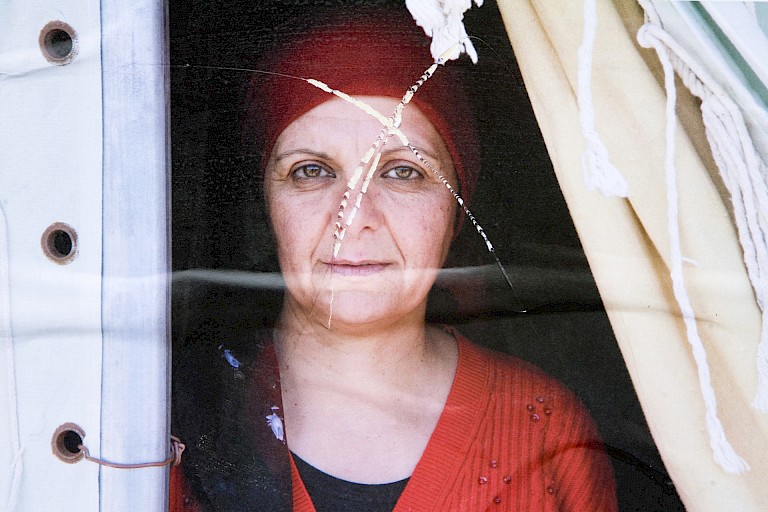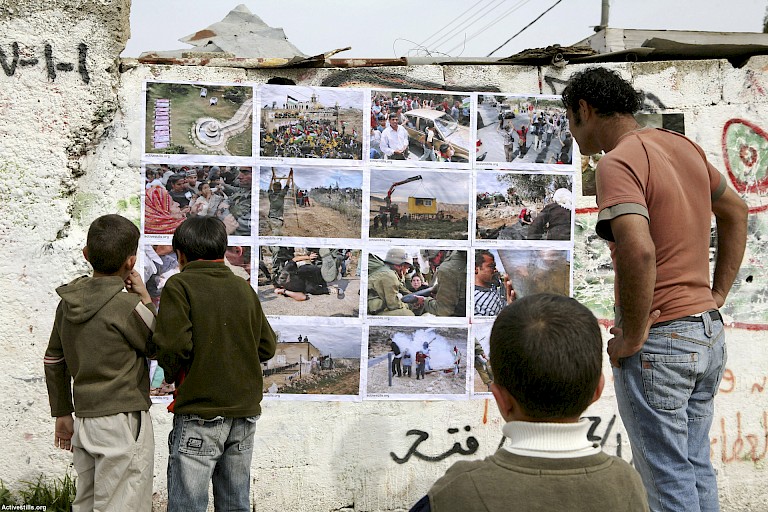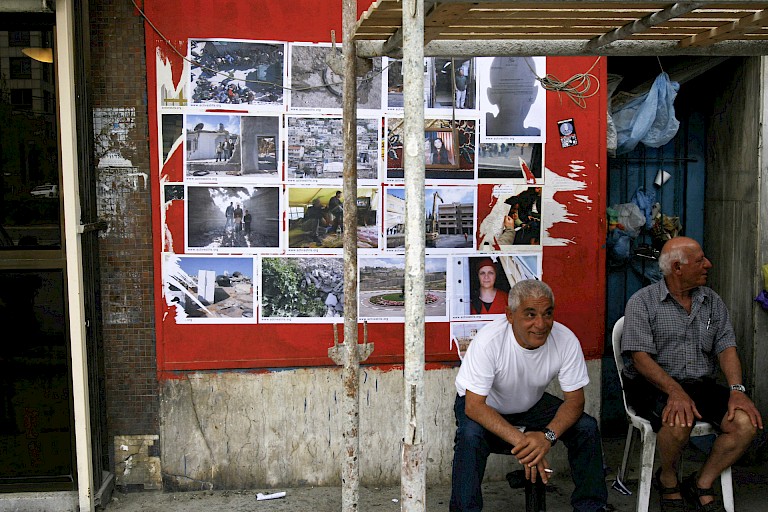



Not surprisingly, Activestills found the traditional gallery approach—which “curates” an audience as much as a body of artwork—limiting to their aim of social transformation. As a result, the group launched On the Side of the Road, an ongoing street exhibition series. Each intervention consisted of large-scale printed photographs displayed on walls in public spaces traversed by thousands.
“When we initiated this practice in 2005, street photo exhibitions were not common in the region,” says Shiraz Grinbaum, an Activestills member. “Today, they are well known in Israel and Palestine.”
The idea for On the Side of the Road came during demonstrations against the Israeli-built “separation wall” in the West Bank town of Bil’in. When the photographers found mainstream media outlets were uninterested in their photographs documenting the protests, they took matters into their own hands by simply printing them out on A4 letter paper and tacking them on public walls.
The reaction was immediate, and included graffiti and defacement, as well as positive feedback. The variety of responses convinced the group that the method was worth pursuing.
“Very early on, we understood that every reaction to the work is a mark of success,” says Grinbaum. “Whether our work is vandalized or praised, we see this as an important politicization of the space in which the images are exhibited. With today's low level of civil involvement in the political sphere, we see every action, even when it comes to counter our point of view, as part of the struggle to continuously democratize public space and to extend the boundaries of freedom of speech.”
Since the start of the project, social media photo sharing has exploded, and Activestills has developed a reputation for its imagery of the conflict. Its photographers are regularly featured in the mainstream and alternative press.
In spite of these developments, the On the Side of the Road exhibitions continue. In fact, the idea has been adopted by other groups in the region. “It’s become a model that is now used by other local activists in Israel and the West Bank as different groups initiate mobile exhibitions to share visual and textual information regarding their struggles,” says Grinbaum. Some of these exhibitions consist of images “on loan” from the collective; others are created from scratch by imitators.
And they retain their ability to attract audiences in public spaces. “To our great satisfaction,” Grinbaum says, “both left-wing and right-wing audiences continue to engage with our photos and react to them.”
The group was invited to exhibit part of the project during Israel’s International Photography Festival.
All copyright belongs to Shanghai Academy of Fine Arts, Shanghai University.



